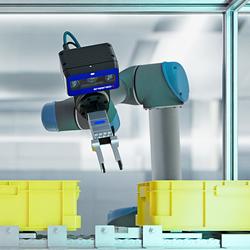DRC Trials 2013 Countdown: Anatomy of a Disaster-Response Robot
Team designs vary but incorporate similar technologies that could make robots practical and robust aides in future emergencies
The Atlas robot is an example of one of many innovative prototypes of disaster-response robots scheduled to compete in the DARPA Robotics Challenge (DRC) Trials that are taking place December 20-21 at the Homestead-Miami Speedway in Homestead, Fla.
While a number of the teams' robot designs embody different approaches, the designs also incorporate many of the same advanced technologies. Technologies include those that help the robots perceive, move through and perform tasks in simulated disaster environments, all with a human operator in the loop. The technologies also enable the robots' operators to see what the robots see and direct the robots in real time. Through the DRC, DARPA aims to advance robots' capabilities to help human responders in future emergencies.
The DRC Trials are free and open to the public. In addition to the competition, the onsite DRC Exposition will showcase technology related to disaster response, robotics and autonomy. It will include, among others, demonstrations of DARPA's "Wild Cat" (an untethered, all-terrain version of the "Cheetah" robot) and Legged Squad Support System (LS3). More information is available at www.theroboticschallenge.org.
Featured Product

3D Vision: Ensenso B now also available as a mono version!
This compact 3D camera series combines a very short working distance, a large field of view and a high depth of field - perfect for bin picking applications. With its ability to capture multiple objects over a large area, it can help robots empty containers more efficiently. Now available from IDS Imaging Development Systems. In the color version of the Ensenso B, the stereo system is equipped with two RGB image sensors. This saves additional sensors and reduces installation space and hardware costs. Now, you can also choose your model to be equipped with two 5 MP mono sensors, achieving impressively high spatial precision. With enhanced sharpness and accuracy, you can tackle applications where absolute precision is essential. The great strength of the Ensenso B lies in the very precise detection of objects at close range. It offers a wide field of view and an impressively high depth of field. This means that the area in which an object is in focus is unusually large. At a distance of 30 centimetres between the camera and the object, the Z-accuracy is approx. 0.1 millimetres. The maximum working distance is 2 meters. This 3D camera series complies with protection class IP65/67 and is ideal for use in industrial environments.
